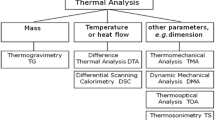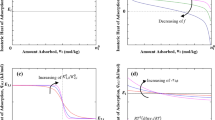Abstract
ALTHOUGH relations of the type  where a is activity, n is number of moles, and the suffixes denote the components, are by no means new1, they have been little exploited. Further types such as
where a is activity, n is number of moles, and the suffixes denote the components, are by no means new1, they have been little exploited. Further types such as  and
and  do not seem to appear in the literature at all, though they are sometimes more convenient to use than equation (1). Despite their neglect, these cross-differentiation relations provide a versatile tool in the study of three-component and more complicated systems, as the brief survey in this communication will indicate. They can be generalized by replacing the lna's by any partial molal quantities. Perhaps the most important conclusion is that, from measurements of the solvent activity only, it is possible to calculate the activities of all the other components.
do not seem to appear in the literature at all, though they are sometimes more convenient to use than equation (1). Despite their neglect, these cross-differentiation relations provide a versatile tool in the study of three-component and more complicated systems, as the brief survey in this communication will indicate. They can be generalized by replacing the lna's by any partial molal quantities. Perhaps the most important conclusion is that, from measurements of the solvent activity only, it is possible to calculate the activities of all the other components.
Similar content being viewed by others
References
Guggenheim, “Thermodynamics”, 249 (North-Holland Publishing Co., Amsterdam, 1949).
Glueckauf, McKay and Perring (in preparation).
Owen and Cooke, J. Amer. Chem. Soc., 59, 2273 (1937).
Harned and Owen, “The Physical Chemistry of Electrolytic Solutions”, 459 (Reinhold, New York, 1943).
Glueckauf, McKay and Mathieson, J. Chem. Soc., S 299 (1949).
Gardner, McKay and Warren (in preparation).
Nature, 169, 22 (1952).
Darken, J. Amer. Chem. Soc., 72, 2909 (1950).
Author information
Authors and Affiliations
Rights and permissions
About this article
Cite this article
McKAY, H. Thermodynamics of Three-Component Systems. Nature 169, 464–465 (1952). https://doi.org/10.1038/169464a0
Issue Date:
DOI: https://doi.org/10.1038/169464a0
- Springer Nature Limited





